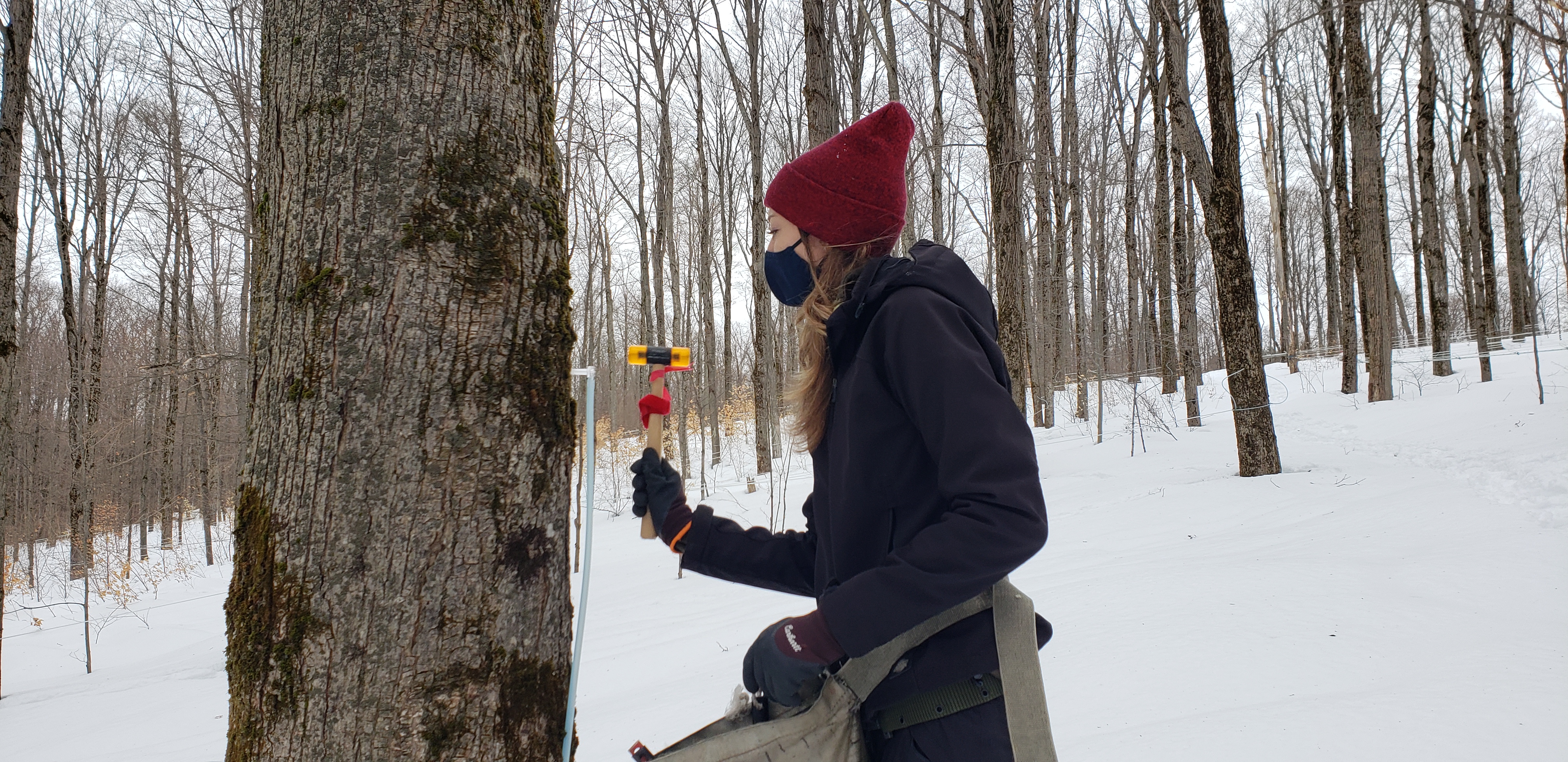Recent Headlines

Jill Rahn taps sugar maples at ESF's Heiberg Forest in Tully, New York
Tap into Maple Syrup at Heiberg Forest
That tap, tap, tapping you hear in ESF's Heiberg Forest isn't woodpeckers looking for insects in trees, it's the forest properties crew tapping trees as maple syrup season kicks off.
The College's current sugarbush in the Tully, New York forest has 3.3 miles of tubing and uses a vacuum pump to bring the sap to the collection building with enough storage for 2,400 gallons of sap, according to Jill Rahn, forest resource analyst at ESF.
But before they can fill those tanks, approximately 2,000 taps have to be placed. Tapping began the last week in February and took about three days.
"We look for days above freezing and nights below freezing because that's when your sap is going to be flowing," said Rahn, as she placed another tap. "We saw those conditions recently when we were tapping so the trees were already producing sap that day."
Taps can stay in the tree for approximately 90 days. "They will be pulled in April when the sap stops flowing because the days and nights are above freezing, or when the buds start to come out on the maple trees."
Trees that are bigger than 18-inches in diameter get two taps, smaller trees get one. "The taps are placed so they draw sap from different parts of the tree," explained Rahn.
"We look for an area of the tree that hasn't been tapped before, and drill about an inch and half in or so to put the tap in. Then we tap the tap (with a hammer) and that's it," she said.
The tap has a check-valve that allows the sap to flow out of the tree, and not back into the tree to prevent bacteria growth at the tap area.
The goal is to get the roundest hole possible so there are no leaks around the tap. "This is a vacuum system so once everything is pressurized we don't want it to have any leaks because that will decrease the pressure in the vacuum system and decrease our sap yields."
On average, between 120 to 150 taps are placed a day per crew member. "Last year it was around 200, but this year with so much snow in the forest it takes longer to snowshoe from tree to tree," she said. Five people from ESF's Forest Properties department work tapping the trees.
Once the sap is collected, it's good for approximately 48 hours. "So if we get a lot of sap on a Friday, we'll come in over the weekend to boil it," Rahn said.
Maple sugaring has been taking place at Heiberg since the 1950s when the College used buckets and bags to collect sap. In the 1960s, the College received a research grant to look at the then-new tubing systems.
"The College realized it was a good revenue source that continues today," Rahn said. The syrup is sold at Heiberg Forest and in the ESF College Bookstore with a portion of the proceeds benefitting student scholarships.